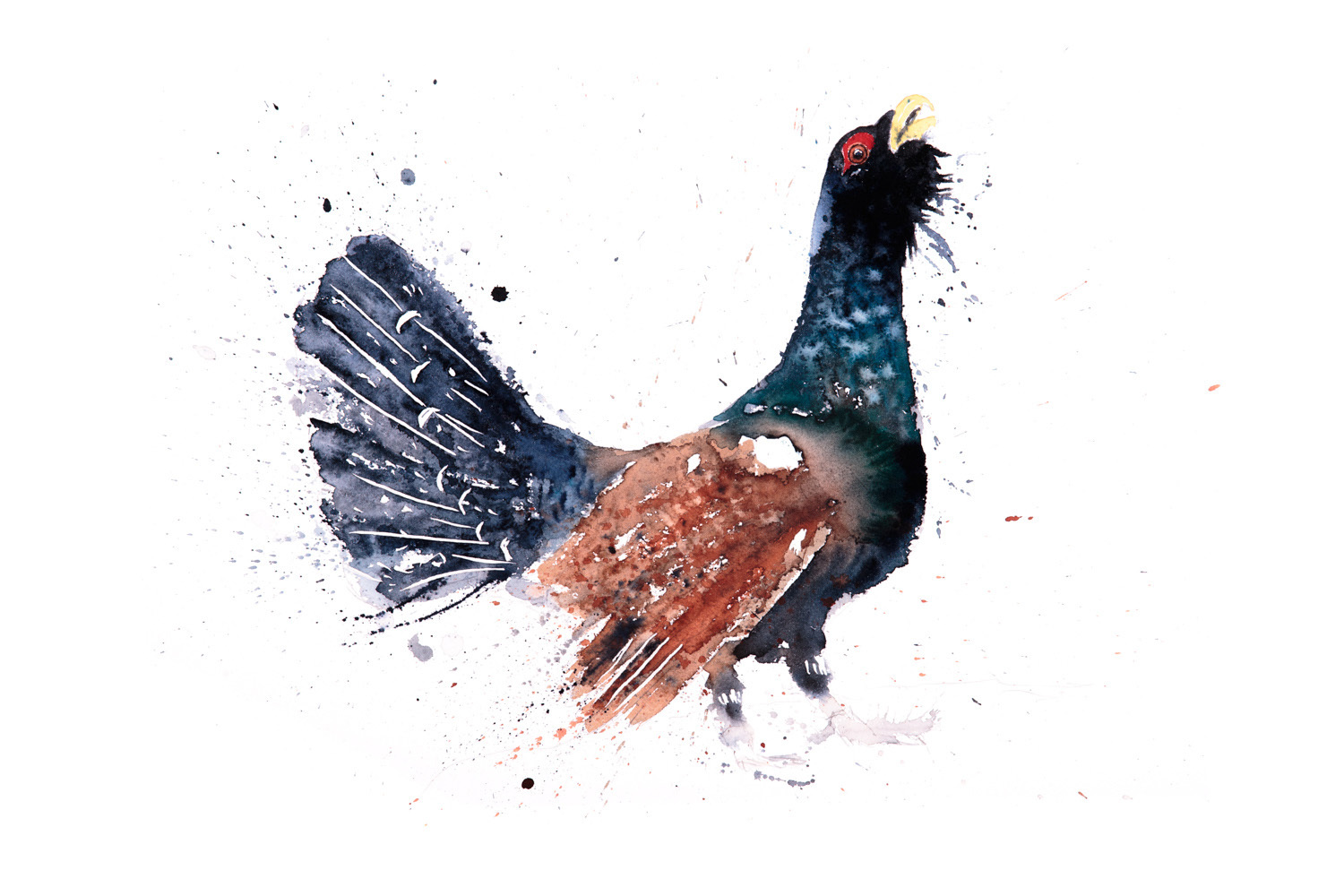
CONSERVATIONISTS and gamekeepers are at odds over new moves to boost numbers of Scotland’s most endangered bird, the capercaillie.
A steep decline in recent years has seen the largest member of the grouse family included on a “red list” of species of at-risk creatures.
The latest national survey revealed there now may be as few as 1114 left, restricted to only a few areas, mostly in Strathspey. That number is down from 1285 when the last national count was done six years ago.
In a bid to combat the decline, two pairs of capercaillie have just been introduced to the Royal Zoological Society of Scotland’s Highland Wildlife Park in Inverness-shire.
The initiative is designed to help ring-fence the future of the species, which continues to come under threat from predators, habitat destruction, shifts in weather patterns and birds flying into deer fences.
The birds are notoriously difficult to breed with a view to being released into the wild, but a start has to be made to try to get numbers up, said Doug Richardson, head of living collections at the wildlife park.
“Historically we have raised dozens of capercaillie and we have a lot of experience in that area,” he told The Sunday Post.
“But they are not the easiest of birds to manage in captivity.
“We are developing the skills so we can make a contribution to the wild capercaillie population if we are asked.”
However, the move to breed capercaillie in captivity is not entirely welcomed by everyone. According to the Scottish Gamekeepers Association (SGA), the bird is likely doomed to die out here.
The capercaillie is a native species that became extinct in Britain in the mid-18th Century.
The main cause was thought to have been a catastrophic loss of its woodland habitat.
National survey results fuel plans to help Scotland’s capercaillies
Birds from Sweden were reintroduced into Perthshire in 1837 and by the 1970s numbers of capercaillie had grown to about 20,000.
The SGA believes huge amounts of money being spent to revive the fortunes of wild capercaillie will be in vain.
Spokesman Kenneth Stephen said: “Eye-watering sums of public money have been spent by conservation bodies on boosting capercaillie numbers, yet the recent figures, published this year, show again the continuing pattern of decline.
“To most people, that would beg the question: is the taxpayer getting the expected return on that investment?
“Expensive habitat programmes are well and good but you will not unlock the benefit of improving habitat if you then fail to protect the species from being eaten by its predators.
“Our understanding is that, in two core forests, fox control has actually been abandoned completely.”
The SGA pointed out a study of 20 capercaillie nests at RSPB-managed Abernethy Forest, using video cameras, showed that 57% of the nests were destroyed by pine martens.
“In response, scientists at Game and Wildlife Conservation Trust designed and proposed a very good adaptive management trial to remove pine martens from core capercaillie breeding areas under licence, to establish if this would boost survival chances,” added Mr Stephen.
“However, this was kicked out by conservationists and heritage bodies. We have been saying for many years that the capercaillie is being allowed to fall below population viability, to the point that predation will never allow the species to recover unless something is done urgently to protect it from rising predator numbers.”
Despite opposing opinions about the validity of expensive breeding programmes, wildlife organisations are united in the view that something has to be done before the capercaillie disappears from Scotland for the second time.
Justin Prigmore, of the Cairngorms National Park Authority, said ultimately the birds would need bigger, better-managed and better-connected forests if they were to thrive in the future.
“Introducing two pairs at the wildlife park can help with people’s connection with the species because to save the capercaillie for future generations we need to win hearts and minds, to build a bond between people and place and to address some of the disconnection with nature in our communities,” he said.
“Caper are difficult to see, so having birds on display at the park can foster a greater sense of connection with people.
“If the Highland Wildlife Park can produce chicks that can survive well in the wild then this could be a valuable tool to have available for the future and could help get capercaillie back into the forest where they once were.”

Enjoy the convenience of having The Sunday Post delivered as a digital ePaper straight to your smartphone, tablet or computer.
Subscribe for only £5.49 a month and enjoy all the benefits of the printed paper as a digital replica.
Subscribe